The best time to see northern lights is something every travel enthusiast dreams about. Imagine standing under a dark sky, watching waves of green, pink, and purple dance above you. The northern lights, also known as the Aurora Borealis, are a natural light display caused by solar particles interacting with the Earth’s atmosphere.
But many wonder, where to see northern lights, or northern lights in which country offers the best experience.
In this guide, we will explore the best places to see northern lights, the ideal seasons, and a planning checklist to make your trip unforgettable.
Why Are the Northern Lights So Special?
The northern lights are not just beautiful; they are one of nature’s most magical shows. They occur when charged particles from the sun collide with gases in Earth’s atmosphere, creating colorful light displays.
The natural wonder has fascinated people for centuries and remains one of the most sought-after experiences for travelers. Each display is unique, making every visit special and unpredictable.
Top 10 Best Places to See the Northern Lights
The top 10 best places to see northern lights are:
- Tromso, Norway
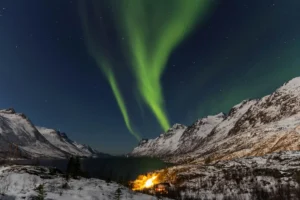
Known as the gateway to the Arctic, Tromso offers some of the most stunning views of the northern lights. Its location above the Arctic Circle and low light pollution make it ideal. Visitors can combine aurora viewing with whale watching, dog sledding, and exploring Sami culture. - Reykjavik, Iceland

Iceland is famous for its geothermal springs and volcanoes, but it also ranks among the best places to see northern lights. The best time to see northern lights in Iceland is between September and April. Besides the aurora, the landscape with glaciers and waterfalls provides a dramatic backdrop.
- Abisko, Sweden
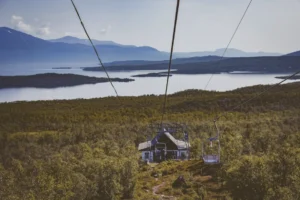
The Abisko National Park offers clear skies and minimal light pollution. It’s often considered the northern lights’ best place to see due to its unique weather patterns, which include the “blue hole,” a spot of clear sky above the park that increases the chances of seeing the lights. - Rovaniemi, Finland

Located in Lapland, Rovaniemi is the official hometown of Santa Claus and a perfect spot for viewing the northern lights. The region offers glass igloos and aurora camps, combining a cozy stay with spectacular light shows. - Fairbanks, Alaska
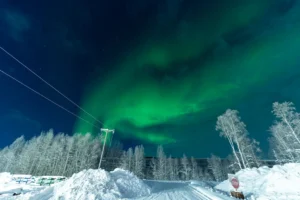
Alaska provides one of the most accessible places in the United States to witness the northern lights. Fairbanks is popular for aurora viewing during winter, especially in the remote wilderness lodges that offer minimal light pollution and comfortable facilities. - Yellowknife, Canada
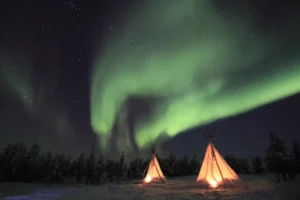
The small city in the Northwest Territories offers excellent conditions for seeing the northern lights thanks to its clear skies and stable weather. The open landscapes make for excellent aurora photography opportunities. - Murmansk, Russia
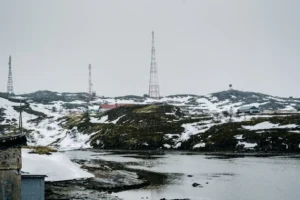
The largest city above the Arctic Circle, Murmansk, offers a great chance to see the northern lights that Russia offers. Its proximity to the Kola Peninsula makes it a lesser-known but remarkable destination for aurora chasers.
8.Svalbard, Norway
Far north of Norway, Svalbard offers polar night conditions, giving a longer period to catch the northern lights. From November to February, the sun doesn’t rise, creating extended dark periods perfect for viewing.
- Kakslauttanen, Finland

Famous for its glass igloos, this location allows you to enjoy the northern lights from the comfort of your bed. The remote Arctic setting ensures minimal light pollution, offering a magical experience. - Kiruna, Sweden
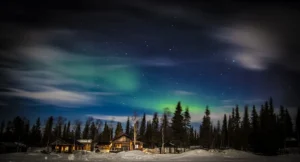
Another excellent location in Sweden, Kiruna, offers excellent tours and accommodations for aurora seekers. Visitors can also explore the nearby Icehotel, a unique attraction built entirely of snow and ice.
When Is the Best Time to See Northern Lights?
The best time to see northern lights is during the winter months, from late September to early April. The northern lights best time to visit depends on weather conditions and solar activity. Dark, clear skies are essential for a good show.
- Best time to visit Norway for northern lights: October to March. The long nights and frequent clear skies make it a top destination.
- Best time to see northern lights in Iceland: September to April. Peak visibility occurs between October and March, when nights are longest.
Avoid visiting during the summer, as the midnight sun prevents darkness, making aurora visibility nearly impossible.
Factors Affecting Visibility
Several factors influence your chances of witnessing the northern lights:
- Solar Activity: Solar flares and sunspot cycles increase aurora activity. The 11-year solar cycle means periods of high and low activity, impacting visibility.
- Weather Conditions: Clear skies are essential. Cloud cover can obscure the aurora, so locations with frequent clear weather have better chances.
- Light Pollution: Cities and towns with bright lights reduce visibility. Remote locations far from city lights offer the best views.
- Geomagnetic Latitude: Areas closer to the magnetic poles have a higher chance of seeing the northern lights. The closer you are to the Arctic Circle, the better.
How to Plan Your Northern Lights Trip
- Choose the Right Destination: Pick a place known for consistent aurora sightings. Use the list above to decide based on your travel preferences.
- Check the Aurora Forecast: Websites and apps provide real-time aurora forecasts. Look for high KP index numbers and clear weather. The higher the KP index (5+), the better the chance of seeing a strong aurora.
- Time Your Visit Properly: The best time to visit the northern lights is during the long nights of winter. December to February is often ideal, as these months offer the longest, darkest nights.
- Book Accommodation Early: Popular locations fill up fast. Consider places with glass igloos or cabins designed for aurora viewing. Booking early ensures availability and often better prices.
- Plan Activities Around Night Viewing: During the day, enjoy local attractions like ice hotels, snowmobiling, dog sledding, and visiting geothermal hot springs. This way, your trip remains exciting beyond just night-time aurora watching.
- Dress Appropriately: Bring layers, thermal wear, insulated jackets, waterproof boots, gloves, and hats. The temperatures can drop well below freezing, especially at night.
- Photography Tips: Use a tripod, a wide-angle lens, and manual camera settings. A fast shutter speed (around 10-30 seconds) helps capture the movement of the aurora. Don’t forget spare batteries, as cold weather drains them quickly.
Where Can We See Northern Lights Other Than the Arctic?
While the Arctic Circle offers the best views, you can sometimes see the northern lights from Scotland, Ireland, and even parts of the northern USA during strong solar storms.
However, these are less reliable compared to the locations mentioned. Rarely, during strong solar activity, auroras extend far south and can be visible from places much further from the poles.
WanderTrust’s Unique Travel Experience
When planning such an exciting trip, having a trusted travel company makes all the difference. WanderTrust specializes in customized trips that ensure you experience the best time to see northern lights without the usual stress.
With countless happy customers sharing their experiences, you can check out WanderTrust testimonials to see how they’ve made aurora dreams come true.
Why WanderTrust?
- Customized trips tailored to your needs.
- Surprise and planned travel options.
- Expert local guides for aurora viewing.
- Personal attention to every detail of your journey.
Conclusion
The best time to see northern lights is a magical journey worth planning carefully. From choosing the best place to see northern lights to knowing where to see northern lights and understanding what northern lights are, every detail adds to the experience.
Whether it’s Iceland, Norway, Sweden, or Alaska, each destination offers a unique chance to witness this natural wonder. Make sure to plan, book accommodations early, and prepare for cold weather.
To learn more, explore WanderTrust’s expert travel blog section!
We’re thrilled to assist you in planning your next getaway. Expect to hear from us shortly, and get ready to embark on a journey of a lifetime!.
See Our Explorers Testimonials
Frequently Asked Questions
The best time to see northern lights in 2025 is between late September and early April, with peak viewing months being December, January, and February. During this time, nights are longest and darkest, increasing your chances of seeing the aurora.
The best time to see northern lights in Iceland is from September to April. The months of October, February, and March are particularly good because of stable weather and longer nights.
The best time to visit Norway for northern lights is from October to March. During this period, especially between December and February, you get the longest nights and clear skies, offering optimal aurora viewing conditions.
The best time to see northern lights for beginners is between December and February. It is when the aurora activity is strong, and many tour operators offer guided trips with all the necessary support, making it easier for first-time travelers.
The best time to see northern lights in Norway or Iceland is from late September to early April. For Iceland, October to March offers the clearest skies, while for Norway, December to February provides the longest nights and the highest chances of seeing the aurora.
